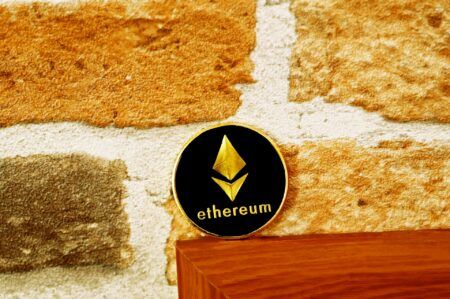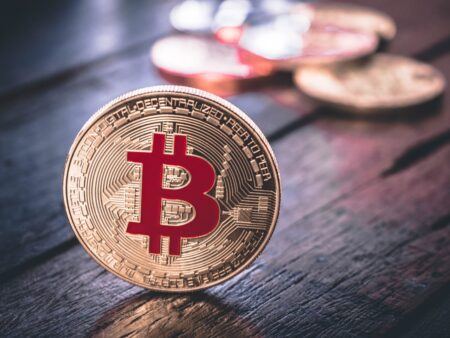On Wednesday (March 6th), Brad Garlinghouse, the CEO of Ripple, presented his latest thoughts on JPMorgan Chase’s dollar-collateralized stablecoin project JPM Coin at DC Blockchain Summit 2019 (March 6–7, 2019), which was held at Georgetown University in Washington, D.C.
This event is the Chamber of Digital Commerce’s “annual in-person gathering held in partnership with Georgetown University’s Center for Financial Markets and Policy.” The mission of the Chamber of Digital Commerce is “to promote the acceptance and use of digital assets and blockchain-based technologies. “
While being interviewed by Nasdaq reporter Jill Malandrino on stage at this event, the Ripple CEO was asked what he thinks about JPM Coin, which was annaounced by JPMorgan Chase on February 14th. This is what the Ripple CEO said about JPM Coin back then:
As predicted, banks are changing their tune on crypto. But this JPM project misses the point – introducing a closed network today is like launching AOL after Netscape’s IPO. 2 years later, and bank coins still aren’t the answer https://t.co/39EAiSJwAz https://t.co/e7t7iz7h21
— Brad Garlinghouse (@bgarlinghouse) February 14, 2019
This tweet linked to a post titled “The Case Against BankCoin” that Garlinghouse had made on Linkedin roughly three years (24 february 2016), where he described why such “BankCoin” projects were “misguided” efforts:
“UBS, Deutsche Bank, Santander and BNY Mellon announced their 'utility settlement coin,' a new digital asset they hope will become the industry standard for blockchain settlements. They expect banks will initially use the coin for post-trade settlement and clearing by early 2018, after they secure blessing from regulators and central banks.
While this development signals significant market traction for an institutional use of digital assets, I have to say it’s deeply misguided. A bank-issued digital asset can only really efficiently settle between the banks who issued it. Then, two scenarios can play out.
Scenario one: all banks around the world put aside competitive and geopolitical differences, adopt the same digital asset, agree on its rules, and harmoniously govern its usage. Fat chance.
Scenario two (the more likely scenario): banks not in the issuing group issue their own digital assets with their own sets of rules and governance.”
“We’re kinda seeing this already, as the FT points out, with Citi’s Citicoin and Goldman Sachs’ SETLcoin. The result would be an even more fragmented currency landscape than what we have today. If banks of different digital asset groups want to settle trades with one another, they’ll have to make markets between their unique digital assets or trade between their digital assets and a common fiat currency. What a mess!
The second big problem with the 'utility settlement coin' is it seems it’ll be backed by a basket of currencies. Once backed by cash, it’s no longer an asset; it’s a liability. Trading liabilities then ultimately requires moving cash across borders, re-creating today’s system but adding more friction!”
And the final point that he had made in that 2016 Linkedin post was why banks needed an independent digial asset such as XRP:
“We strongly believe banks need an independent digital asset to enable truly efficient settlement and we believe XRP is best positioned for that role. It goes back to the fundamentals of what makes digital assets unique and special – they’re universal currencies, meaning anyone can use them as units of value anywhere in the world. That universality gives digital assets global reach and the ability to settle much faster than traditional assets.”
Now, coming back to yesterday’s interview at the 4th annual DC Blockchain Summit, this was Malandrino’s question about JPM Coin:
“Is that similar to a traditional cryptocurrency? Because to me, it doesn't sound like a decentralized product, even though cryptocurrency promotes decentralization. So, what are the differences with what we traditionally consider crypto?”
Garlinghouse replied:
“Well, let me start by saying [that] I think it's great for the blockchain and crypto industry to have players like JPM leaning in. Thumbs up! That's great! That's the only nice thing I'm going to say about this.”
He then continued by starting to explain why he was not a big fan of JPM Coin:
“OK, so I got asked this last week. I was speaking at a Morgan Stanley conference, and someone asked me…there was this headline about JPM Coin. This guy was from Morgan Stanley who was interviewing me. So, I asked him 'Is Morgan Stanley going to use the JPM Coin?'. He said 'probably not'. Or is Citi going to use the JPM Coin? Is BBVA? Is PNC? And the answer is no. And so does that we're going to have all these different coins, and does that mean we're back to where we are with lack of interoperability? I don't get it.”
Next, Garlinghouse talked about his second major objection to JPM Coin:
“So, let's think about this. JPM Coin, they announced for institutional customers, if you give them a dollar in deposits, they’ll give you a JPM Coin that you then can move within the JPM ledger. Wait a minute, just use the dollar!” he said. “I really don’t understand. If you’re just moving within the JPM ledger, and it has to be dollar-to-dollar, one-to-one backing, I don’t understand what problem that solves.”
Another topic that Malandrino asked Garlinghouse about was the need for regulatory certainty in the U.S. The Ripple CEO made this brilliant reply:
.@bgarlinghouse responding to @jillmalandrino on the need for regulatory certainty in the United States: “We’ve been asked as an industry not to speed, but we weren’t given a speed limit.” #DCBlockchain Tune in now! https://t.co/W2KYZe6idS pic.twitter.com/D4lPG6FLzk
— Chamber of Digital Commerce (@DigitalChamber) March 6, 2019
And finally, when talking about use cases for blockchain technology, this is what Garlinghouse had to say:
“Blockchain has become catnip for investors. But the real use cases are finally emerging—improving payments is a key one.” – @bgarlinghouse in convo with @JillMalandrino at #DCBlockchain Summit 2019 pic.twitter.com/gphKEXuX5N
— Ripple (@Ripple) March 7, 2019
Featured Image Courtesy of Ripple Labs









